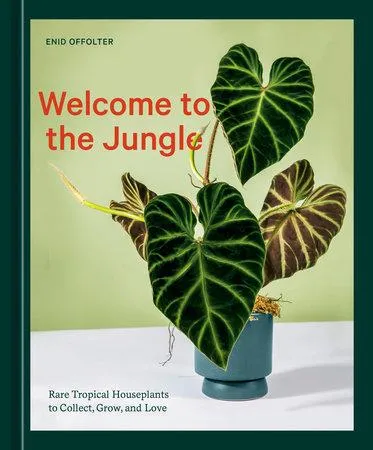Your Guide to Growing Unique and Unusual Houseplants
If you’re searching for rare indoor plants, you’ve come to the right place. As an avid houseplant collector, I’ve grown hundreds of different species over the years and have picks for some of the coolest, hardest to find varieties out there. From my experience, nothing beats the thrill of nurturing an exotic plant in your home. In this article, I’ll break down common questions folks have about rare houseplants and give you tips to successfully grow a wide range of unique specimens.
What Makes a Plant Rare?
Plants are considered rare for a few key reasons:
- They originate from remote areas that see little plant trade like tropical rainforests or high mountain regions.
- They reproduce slowly in the wild or are slow to propagate, limiting natural supply.
- Low consumer demand has kept them out of mass cultivation by commercial growers.
While rarity drives appeal for collectors, it also means rare plants require extra care. Their specialized growing needs may not be widely documented. Fortunately, with patience and the right approach, even trickier beauties can thrive indoors.
Popular Rare Houseplant Choices
Here are some top rare indoor plant picks to consider:
Variegated Monstera Deliciosa
The iconic monsterra is stunning in its plain form, but the variegated cultivars with white or yellow splashes truly stand out. They fetch high prices due to their charming mutations and limited natural occurrence. However, they can be finicky. I lost my first one due to overwatering but replacements have been going strong with frequent drainage and bright light.

Philodendron Burle Marx Fantasy
With intricate lacy leaves in hues ranging ink blue to lime green, these philodendrons arouse plant envy. They love humidity but also need dry periods between watering to avoid rot. Mine has been no hassle once I dialed in the care, pumping out 3-4 new big beautiful leaves each month like clockwork.
Anthurium Warocqueanum
With heart shaped waxy leaves and dramatic red spathes instead of flowers, these anthuriums look alien yet high fashion. They face humidity and moisture fluctuations better than most anthuriums in my experience. My strategy is misting their leaves daily while keeping soil on the slightly drier side instead of soggy.
String of Turtles
Pebbled green “turtles” draping beautifully from hanging pots – what’s not to love about string of turtles? They thrive in low light and tend to wilt easily, so I bottom water mine monthly and keep it perky between waterings by misting the leaves. Propagation is simple once you get the hang of it too.
Rare Orchids
There are thousands of orchid species beyond phalaenopsis to explore like lady’s slippers, vandas and masdevallias. Many require specialized conditions like high/low light, certain temperatures or humidifiers. But others like my cold grower Dendrobium nobile have proven very tolerant of my normal home care. It’s rewarding when you crack the code on a new tricky orchid variety.
Choosing and Caring for Rare Houseplants
Before getting started with any rare plant, do your homework on its growing needs. Light, water, soil and humidity requirements vary greatly between species. Rarity also often means high price tags, so only invest after understanding if you can meet its demands. I’ve sort of wasted money before on aesthetically beautiful yet challenging plants I wasn’t adequately prepared to keep happy. Here are some additional tips:

- Research thoroughly online plus check specialty nurseries and plant groups for care advice from experienced collectors.
- Start with hardier uncommon types and work your way up to finickier beauties as your skills progress.
- Provide optimal conditions – the right soil mix, grow lights if windows lack light, humidifiers etc. Rare plants are unforgiving of imperfect care.
- Repot annually or biannually in the growing season using well-draining potting mixes and fresh soil to promote lush growth.
- Make cuttings or air layers to propagate multiples and ensure success if the mother plant declines.
Challenges When Collecting Rare Indoor Plants
Rare houseplants can be a source of joy but also frustrations:
- Cost – With rarity comes high price tags, up to hundreds for hard to find specimens. This barrier deters many potential collectors.
- Care complexity – Uncommon plants often have unknown or very specific needs that make them risky to new growers.
- Scarcity of info – Documentation may be sparse for challenging species since so few non-experts can keep them alive.
- Pests and diseases – Rare imports face more risks without adequate quarantining or local experience treating issues.
So while rare plant hunting sounds glamorous, the reality demands patience, deep research and deep pockets at times. My best advice is start small with forgiving varieties, take plant casualties in stride as learning experiences and above all, continue to enjoy the journey!
Final Thoughts on Growing Rare Houseplants
Choosing rare indoor plants expands your collection beyond basic pothos and philodendrons. But whether a common type or challenging exotic – all houseplants enrich our living spaces with natural beauty and help clean the air. From my experience, the rewards of nurturing an unusual species from a tiny struggling cutting into a flourishing specimen more than outweigh minor plant mishaps along the way. So if you have a green thumb and sense of adventure, start browsing specialty nurseries online or in your area. You may be surprised what stunning botanical beauties can thrive with TLC on your home.
I hope this guide has answered your intentions and given you confidence to begin exploring the exciting yet sometimes tricky world of rare houseplants. Feel free to let me know if you have any other questions!
Rare Indoor Plants Care Guide
| Plant | Light Needs | Watering | Soil | Notes |
|---|---|---|---|---|
| Chinese Money Plant | Medium | Allow top inch to dry | Potting soil | Tolerates low light. Remove spent flowers. |
| Variegated Monstera | Bright indirect | When top inch is dry | Potting soil | Thrives with moisture. Can climb structures. |
| Peperomia Hope | Low to medium | Allow top inch to dry | Potting soil | Thrives as a tabletop plant. Very easy to care for. |
| String of Hearts | Medium to bright | When top inch is dry | Potting soil | Let vines trail over the pot. Tolerates low humidity. |
| Philodendron White Knight | Medium to bright indirect | When top inch is dry | Potting soil | Prefers consistently moist soil. Variegated leaves. |
FAQ
-
What are some common rare indoor plants?
Some popular but uncommon houseplants include orchids, bromeliads, air plants, and carnivorous plants like Venus flytraps. Rare exotic plants like monstera and bird of paradise are also kind of trendy right now.

-
Are rare plants hard to care for?
Some kinds of unusual plants can require more attention than your average pothos. For instance, orchids need very specific watering and lighting conditions to bloom. At the same time, air plants and succulents may only need occasional misting. So it basically depends on the plant type.
-
Where can I buy rare plants?
On the one hand, uncommon houseplants can sometimes be found at local nurseries or plant stores. Nevertheless, your best bet is usually online plant shops that specialize in rare varieties. Places like Etsy and eBay are also awesome for tracking down more unusual plants, maybe even sometimes cuttings from friends
-
Are rare houseplants worth it?
Rare indoor plants tend to demand lots of attention and have higher price tags. But owning stunning unusual plants is amazing and can make your home aesthetic goals feel totally achieved. The pride of nurturing a finicky rare orchid into bloom might just make it worth it, right? I dunno, you tell me reader – is bringing a rare plant home worth the effort?
-
How do I keep my rare plants alive?
To prevent losing an expensive rare plant, research its needs thoroughly before buying. Make sure you can provide conditions like humidity, sunlight exposure, soil type and watering schedule. It also helps to quarantine new plants to watch for pests. And talk to local plant shops – they’ve got awesome tips for keeping finicky varieties happy and healthy for years to come!
-
Are certain rare houseplants illegal?
Sadly some cool exotic plants are banned in certain areas because they could be invasive if released in the wild. Check regulations for your state or municipality before tracking down rare imports. For example, some cities oddly outlaw certain cacti or succulents that could potentially grow out of control if dumped outside. I guess they want to avoid future plantzilla infestations!

-
What’s the rarest houseplant you can own?
If money and space are no object, perhaps the ultimate rare houseplant is a mature Amorphophallus titanum (corpse plant). It blooms just once every few years, emitting a stench likened to rotting flesh. But those blooms are stunning! Other ultra-rare candidates include ancient kinds of cycads dating back to dinosaur times. So in summary – only go for the real plant unicorns if you’re plant nuts or looking to show off, haha!
